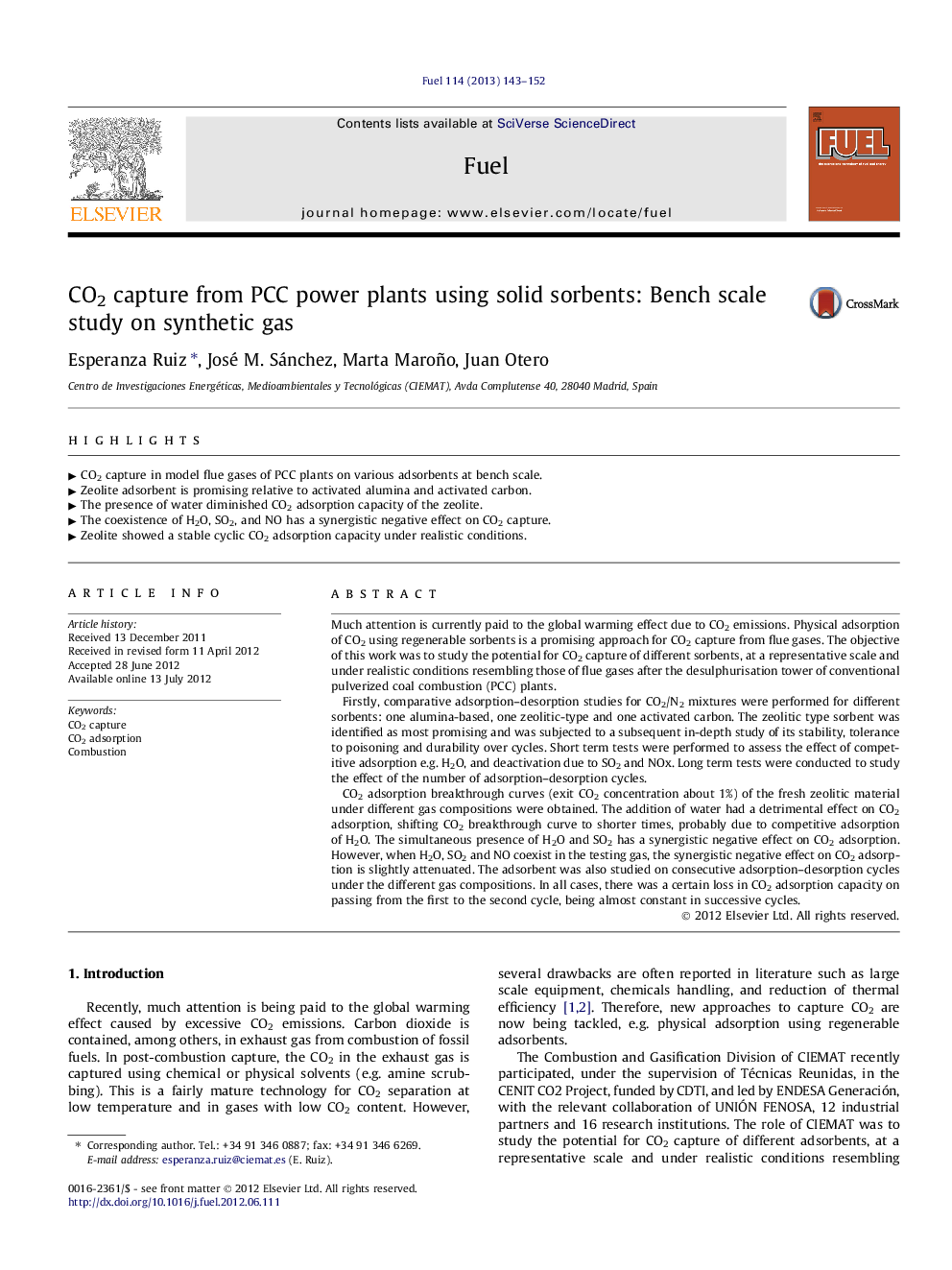| Article ID | Journal | Published Year | Pages | File Type |
|---|---|---|---|---|
| 206289 | Fuel | 2013 | 10 Pages |
Much attention is currently paid to the global warming effect due to CO2 emissions. Physical adsorption of CO2 using regenerable sorbents is a promising approach for CO2 capture from flue gases. The objective of this work was to study the potential for CO2 capture of different sorbents, at a representative scale and under realistic conditions resembling those of flue gases after the desulphurisation tower of conventional pulverized coal combustion (PCC) plants.Firstly, comparative adsorption–desorption studies for CO2/N2 mixtures were performed for different sorbents: one alumina-based, one zeolitic-type and one activated carbon. The zeolitic type sorbent was identified as most promising and was subjected to a subsequent in-depth study of its stability, tolerance to poisoning and durability over cycles. Short term tests were performed to assess the effect of competitive adsorption e.g. H2O, and deactivation due to SO2 and NOx. Long term tests were conducted to study the effect of the number of adsorption–desorption cycles.CO2 adsorption breakthrough curves (exit CO2 concentration about 1%) of the fresh zeolitic material under different gas compositions were obtained. The addition of water had a detrimental effect on CO2 adsorption, shifting CO2 breakthrough curve to shorter times, probably due to competitive adsorption of H2O. The simultaneous presence of H2O and SO2 has a synergistic negative effect on CO2 adsorption. However, when H2O, SO2 and NO coexist in the testing gas, the synergistic negative effect on CO2 adsorption is slightly attenuated. The adsorbent was also studied on consecutive adsorption–desorption cycles under the different gas compositions. In all cases, there was a certain loss in CO2 adsorption capacity on passing from the first to the second cycle, being almost constant in successive cycles.
► CO2 capture in model flue gases of PCC plants on various adsorbents at bench scale. ► Zeolite adsorbent is promising relative to activated alumina and activated carbon. ► The presence of water diminished CO2 adsorption capacity of the zeolite. ► The coexistence of H2O, SO2, and NO has a synergistic negative effect on CO2 capture. ► Zeolite showed a stable cyclic CO2 adsorption capacity under realistic conditions.
